Apps Zone

GPS Camera Map & Geotag Photos
Understanding the Core Mechanisms of Effortless Photo Location Tagging
Effortless photo location tagging involves the seamless integration of GPS technology with photo-capturing devices to record precise geolocation data for every photograph. At its essence, this involves the use of GPS receivers embedded within mobile devices or cameras, which continuously receive and process signals from a network of satellites orbiting the Earth. This information is computed to determine the device's exact location in terms of latitude and longitude coordinates. When a photo is taken, these coordinates are instantly embedded into the metadata of the photo file, a process known as geotagging. This geotagging process allows users to organize and access photos based on their geographical locations, thus transforming their photo collection into a geo-referenced library of memories. The implementation of geotags in photography is particularly important for various professional fields such as journalism, real estate, tourism, and archaeology, where maintaining geographical information of visual data is crucial. Moreover, this technology is instrumental for users who frequently travel, as it helps document their journeys and revisit their exact paths with accuracy. Innovative apps, like GPS Camera Map & Geotag Photos, capitalize on this technology by offering intelligent location auto-tagging features, which require minimal user interaction. As users take photographs, the app automatically captures GPS coordinates in real-time, thanks to smart location recognition systems that enhance accuracy and reliability even in challenging environments. High-resolution photo and video capture capabilities further ensure that visual quality is not sacrificed for the sake of location tagging. Such advancements are pivotal for both leisure users aiming to create organized visual diaries of their adventures and professionals requiring robust evidence of their spatial and temporal presence at specific locations.
The Intricacies of Combining Memories with Geographic Precision
The process of combining memories with pinpoint geographic precision involves more than just embedding coordinates into a photo's metadata; it's about creating a seamless ecosystem where every captured moment is tagged with an array of contextual data that enhances the richness of the photographic collection. For travelers and adventurers, the ability to pair images with exact locations opens a new dimension of storytelling, where each photo is a waypoint in the narrative of their journey. This precision is achieved through sophisticated algorithms that not only calculate location but also identify landmarks and unique characteristics of surroundings, thanks to smart recognition systems embedded within the app's framework. Imagine walking through the bustling streets of a foreign city and snapping photos that automatically capture the intricate details of nearby landmarks, the nuances of street names, and other geographical elements that would otherwise be tedious to record manually. This enriches the visual narrative, allowing users to relive experiences with unparalleled detail and to share their stories with the world with confidence in accuracy. For professional applications, such as documenting real estate properties or construction sites, the combination of visuals with precise locations ensures legal and business compliance, as stakeholders can verify claims tied to specific geographic positions. Furthermore, the incorporation of time-stamping features means that not only space but also time is precisely documented, providing a holistic view of events as they unfolded. Such dual tagging—spatial and temporal—ensures a comprehensive documentation approach that benefits various industries where accountability and transparency are paramount. Consequently, effortless photo location tagging represents a confluence of technological advancement and user-centric design, where usability does not compromise the sophistication of the underlying technology. This synergy ensures that users can focus on experience, while the technological machinery meticulously records every contextual detail to augment personal and professional narratives.
Customization, Personalization, and Geotagging Versatility
Among the most significant advantages of modern geotagging applications is their capacity for customization and personalization, allowing users to tailor their photo collection management according to specific preferences and needs. For instance, the GPS Camera Map & Geotag Photos app offers customizable folder templates that empower users to categorize and sort their photos with ease. This feature is particularly beneficial for those who deal with large volumes of photos, such as content creators and business professionals who require precise organizational capabilities. Users can configure these folders based on themes, dates, locations, or custom tags, ensuring that their libraries reflect their personal or project-specific priorities. Moreover, the app accommodates various styles of metadata integration, allowing users to choose how comprehensive or minimal their geotagging should be. From simply embedding GPS coordinates to incorporating more nuanced data like elevation or landmark names, the app's flexibility caters to a wide range of user scenarios. Furthermore, for those interested in historical or retrospective cataloging, the option to import existing photos and manually add geolocation tags presents an opportunity to breathe new contextual life into older images. Through this feature, users can curate a coherent and comprehensive collection, even from disparate and previously unorganized photo sets. High-quality video recording capabilities extend this customization to moving images, enabling the creation of rich video diaries that are not tethered to a single location, thus offering dynamic storytelling possibilities. Additionally, the app supports smart album creation, where machine learning algorithms assist in grouping photos and videos based on inferred contexts, such as similar locations or thematic elements, enhancing the user’s ability to navigate and reminisce through their digital album.
The Impact and Benefits of Photo Location Tagging for Various Sectors
Effortless photo location tagging technology offers substantial impact and benefits across a multitude of sectors, underscoring its role as a transformative tool in the digital age. In the journalism and media industries, geotagged photos serve as powerful evidence in storytelling, providing verifiable proof of location that adds credibility and depth to reports and articles. By using apps like GPS Camera Map & Geotag Photos, journalists can efficiently gather contextual data alongside their visual captures, which is particularly useful in covering fast-paced or geographically dispersed events. Similarly, in the real estate sector, accurate geotagging allows agents and potential buyers to view properties in the context of their surroundings, providing a richer understanding of the property's location relative to local amenities, transport links, and community features. The tourism industry, too, benefits significantly, as travel companies and guides use geotagging to map out tour routes and create virtual experiences that bring potential tourists closer to destinations they are yet to visit. For archaeologists and researchers working in remote locations, having a precise log of discovery sites ensures that data collected in the field can be cross-referenced with exact geographic locations for future studies and publications. Educational sectors also leverage this technology in academic research and field studies, where students and researchers can use geotagging to link photographs to specific study sites or experiments, facilitating a clear and organized presentation of findings. The integration of photo location tagging into these sectors enhances not only operational efficiency but also enriches the data quality and user engagement, fostering a deeper connection to the content being delivered. These diverse implementations illustrate the wide-ranging applicability of geotagged photography, proving it to be an invaluable asset in both professional workflow optimization and enriched personal documentation.
Download Options and Accessibility to Enhance User Experience
The convenience and functionality of photo location tagging are greatly influenced by how accessible the supporting technology is to users. With Download for Android, the GPS Camera Map & Geotag Photos app ensures that a broad range of users can effortlessly integrate this advanced technology into their daily routines. The app's user-friendly design makes it accessible not only to photography enthusiasts and professionals but also to casual users who wish to enhance their personal photo collections with geographical context. While the Android version allows for comprehensive access to the app's full suite of features, ongoing developments are aimed at expanding accessibility to iPhone, Windows, Linux, and Mac platforms, thus ensuring a ubiquitous user experience regardless of the operating system. This focus on cross-platform availability is crucial for encompassing the technological landscape's diversity, allowing users to benefit from geotagging capabilities without being restricted by their choice of device. Moreover, the seamless integration of geotagging functions with existing workflows—such as direct imports from cloud services or synchronization with social media—further enhances the app's utility and appeal, driving adoption across different user demographics. As technology continues to advance, the future of effortless photo location tagging lies in enhancing its compatibility and accessibility, ensuring that all users can leverage its full potential irrespective of their technical expertise or device preferences, ultimately promoting a culture of organized, informed, and connected visual documentation.
Share Your Opinion
Your Email Will Not Be Published.
All Rights Reserved © Apps Zone 2025

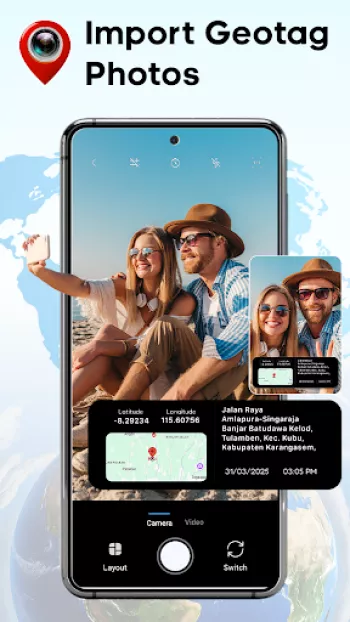
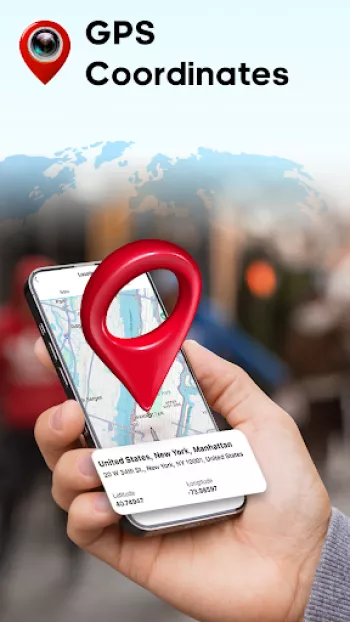
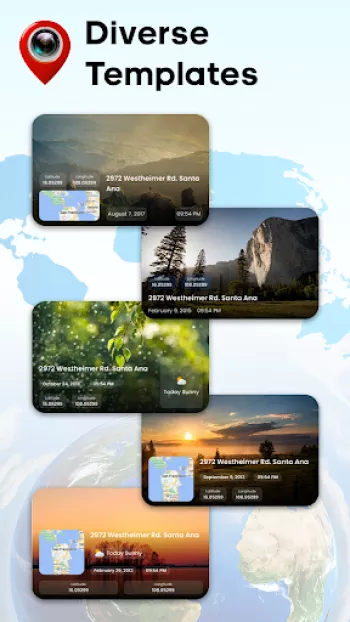

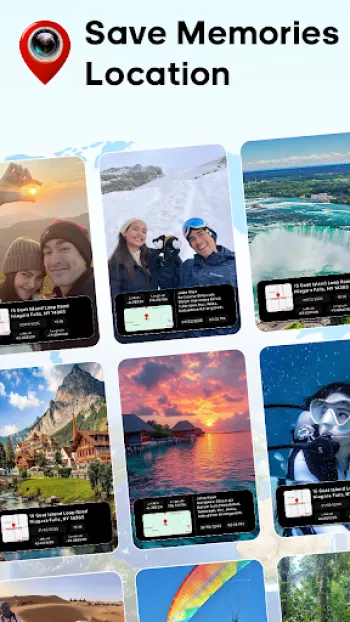









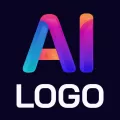


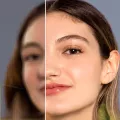

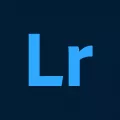
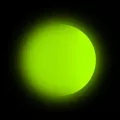







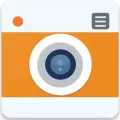
Muhammad Musa
it is really good and I will be in touch with this AI o
Giver Boy
this app.is the most of all mapp 💯 sure of it try this app and love it 💗💗
Alexis
Hi there, please cancel my subscription i got another one. lovely day.
BILAL MUSTAFA
fake app everone reports and give 1 star i know its fake therefore i give advance feedback ìf its real i change it yes i chexk its fake app
Shane S.A
worst app dont install